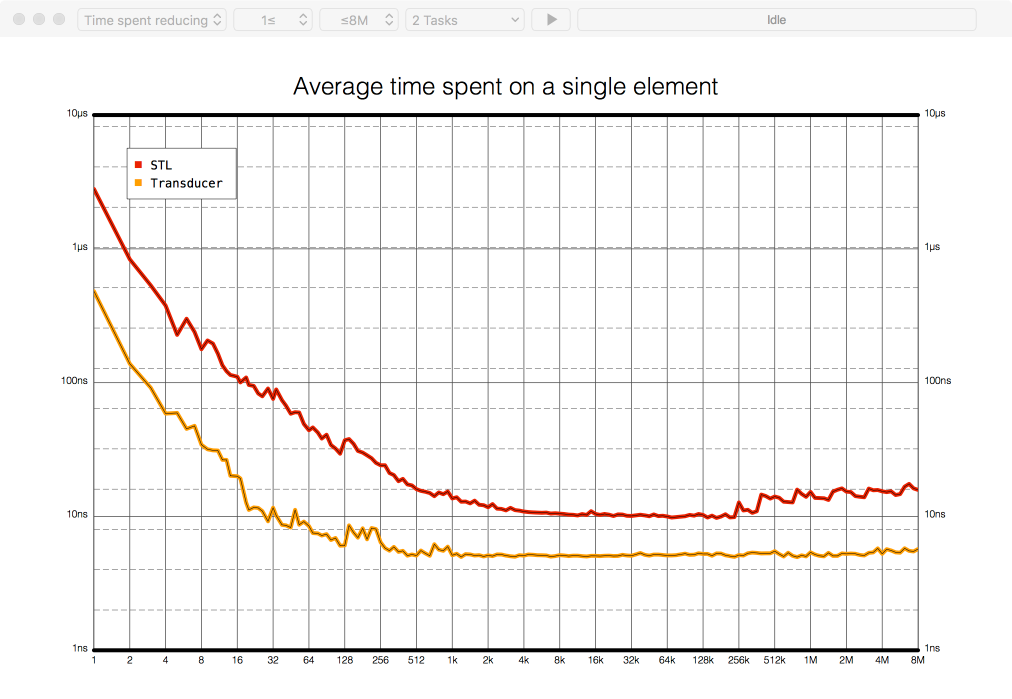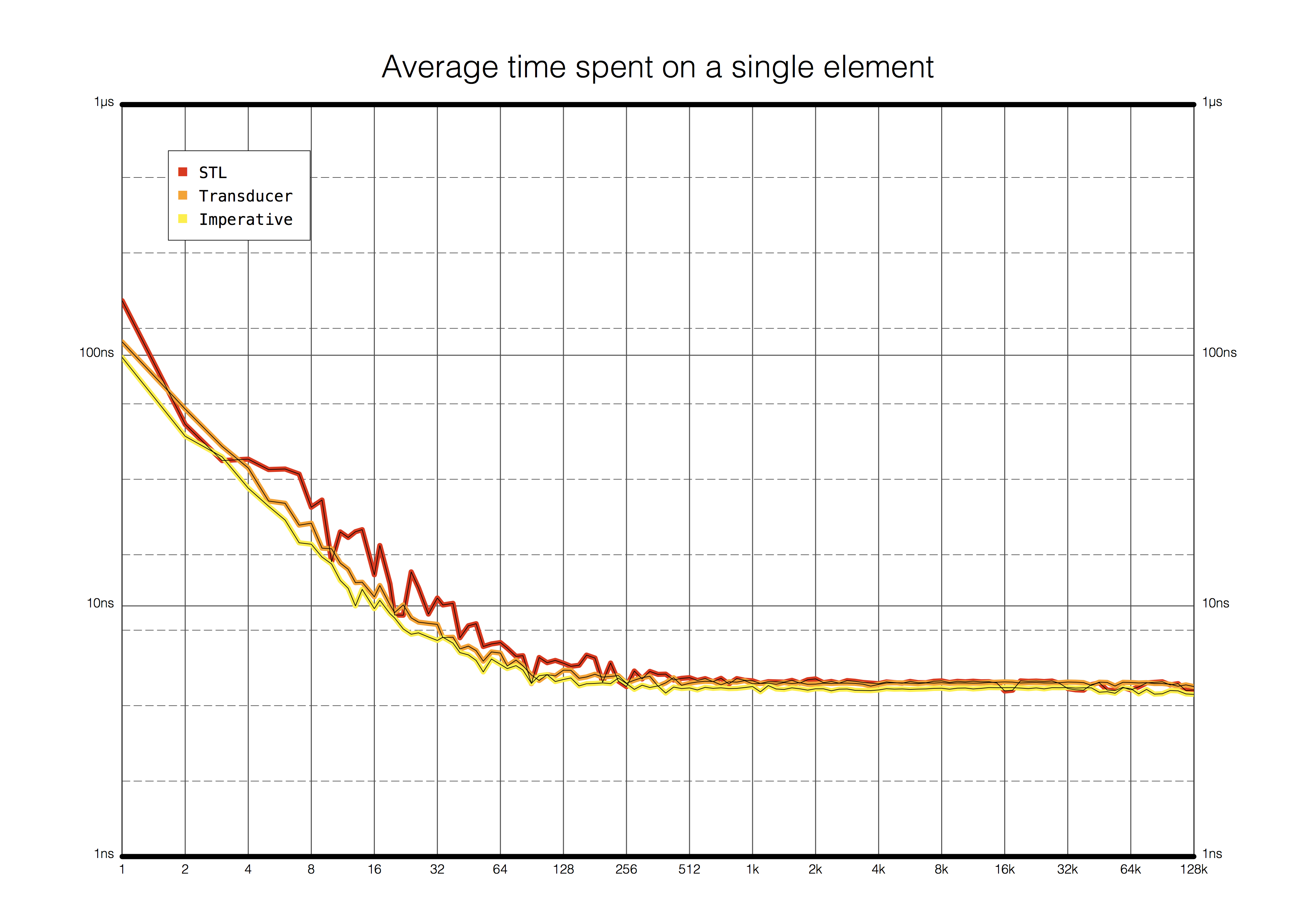Written on
Transducers in Swift II
If you haven’t read the first part of this post, I recommend you to read it here first to see how transducers work. If you don’t care about that kind of stuff, read on.
Performance
So, transducers look cool and all but.. is it fast? To see how fast it is, I will compare various implementations of transducers with map, filter, and reduce that are provided by the Swift Standard Library. And let’s throw in an imperative version of the loop into the list
Setup
We will use Attabench, an awesome benchmarking app made by @lorentey to generate all the pretty graphs.
The tests will be based on three operations that will start with an array of random integers and
- Increment by 1
- Filter evens
- Reduce by adding to 0
Original Transducer vs. STL
// STL
let _ = input.map(incr).filter(isEven).reduce(0, (+))
// Transducer
let _ = input.lazy.reduce(0, (+) ==> mapping(f: incr) ==> filtering(f: isEven))

Here, we can clearly see that the STL’s version is faster. But because we are using custom operators to chain operations, maybe the compiler isn’t able to do aggressive optimizations. Let’s try this again without the custom operators.
Transduers (no custom operators) vs. STL
// STL
let _ = input.map(incr).filter(isEven).reduce(0, (+))
// Transducer
let _ = input.reduce(0, mapping(f: incr)(filtering (f: isEven)(+)))

Well, it seems like using operators to make things pretty cost quite a lot of performance. Without that extra overhead, we can see that our transducers beat Apple’s engineers!! 🎉🎉🎉
But did we???
Turns out Apple engineers thought about the problem of intermediate arrays and made this thing called LazyCollection. It’s the same old collection but implemented lazily.
Here is Apple’s explanation of LazyCollection’s lazy property.
Use the lazy property when chaining operations to prevent intermediate operations from allocating storage, or when you only need a part of the final collection to avoid unnecessary computation.
So… it does the same thing transducers do but with four letters…

Anyways, let’s go ahead and apply lazy to both STL and transducer versions of the code to see what happens.
// STL (lazy)
let _ = input.lazy.map(incr).filter(isEven).reduce(0, (+))
// Transducer (lazy)
let _ = input.lazy.reduce(0, mapping(f: incr)(filtering (f: isEven)(+)))

Well, it looks like our implementation performed about the same as Apple’s implementation. But when tested out on an iPhone 7, heap allocation of our version was much higher than the STL’s; transducers allocated x10 memory in the heap… 😞😞😞
While at it, let’s benchmark an imperative version.
// EDITED 2017.07.21
// Return from @inline(never) because compiler is very aggressive about
// disregarding results that are not used
@inline(never) func loop(input: [Int]) -> Int {
var res = 0
for i in input where i % 2 == 0 {
res += (i + 1)
}
return res
}

Turns out lazy is as speedy as an imperative loop.

So What?
Transducers may be as fast as Swift’s
LazyCollectionbut is highly inefficient.
So when trying to come up with practical use cases for transducers…
I think transducers are a cool idea but unnecessary in Swift (because we have lazy). Seems like forcing FP when it's not necessary :)
— Chris Eidhof (@chriseidhof) July 13, 2017
Lessons
-
Don’t force functional programming concepts into Swift. Swift is not a purely functional language. It’s a multi-paradigm language
-
Grab a complicated functional programming language concept and try to implement it in your favorite programming language if you want a real taste of FP
-
Write more Swift code 😃
Although transducers may not have much practicality, I feel like I took my first REAL steps into the world of functional programming. Reading “Little/Seasoned Schemer” didn’t leave me feeling like a true functional programmer but aching over how to implement transducers certainly did!